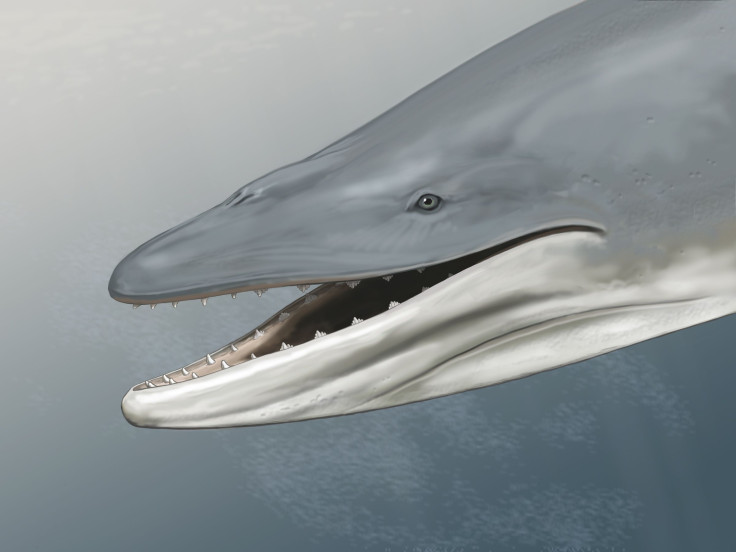Baleen Whales Had Teeth First, Filter-Feeding A Later Evolution

They are the largest extant animals on the planet, and yet, baleen whales don’t really hunt for food, using instead the baleen in their mouths to filter large amounts of sea water and feeding on krill, other zooplankton, small crustaceans and fish. However, these massive animals were once perhaps ferocious predators with sharp teeth, much like their cousins, the toothed whales of today.
Baleen whales, or Mysticetes, split from their toothed cousins, Odontocetes, about 34 million years ago, and researchers analyzed a whale skull from around that time, recovered from Antarctica. The 34-million-year-old skull belongs to a whale ancestor species called Llanocetus denticrenatus.
“Llanocetus denticrenatus is an ancient relative of our modern gentle giants, like humpback and blue whales. Unlike them, however, it had teeth, and probably was a formidable predator,” Felix Marx of the Royal Belgian Institute of Natural Sciences explained in a statement Thursday. Along with R. Ewan Fordyce at the University of Otago in New Zealand, Marx coauthored a new paper on the subject.
Among baleen whales, the mouth has distinctive grooves that contain blood vessels to supply the baleen, which itself is a strong but flexible material, acting like a sieve or a comb. Such grooves were also found in Llanocetus, but they clustered around teeth sockets. If this ancient whale had any baleen, it could have been crushed between its teeth.
“Instead of a filter, it seems that Llanocetus simply had large gums and, judging from the way its teeth are worn, mainly fed by biting large prey. Even so, it was huge: at a total body length of around eight meters, it rivals some living whales in size,” Marx said.
Fordyce and Marx suggested in their study Llanocetus had sharp teeth that were widely placed along its rostrum, which it used to bite and shear its prey. The large gums evolved in complexity over time, giving rise to baleen ultimately. But that transition only occurred after the teeth had already been lost, and when some whales had stopped biting prey and started sucking in small prey instead. The baleen may have first developed as a mechanism to better keep the swallowed prey inside the mouth.
“Until recently, it was thought that filter feeding first emerged when whales still had teeth. Llanocetus shows that this was not the case,” Fordyce said in the statement.
The fact that Llanocetus lived around the same time as the appearance of the first Odontocetes was very lucky, he added.
“Llanocetus presents a lucky combination, where the shape of the bones, small features suggesting the course of soft tissues, and tooth wear all combine to tell a clear story. Crucially, Llanocetus is also extremely old and lived at the very time when Mysticetes first appeared. As such, it provides a rare window into the earliest phase of their evolution,” Fordyce said.
Their paper, titled “Gigantism precedes filter feeding in baleen whale evolution,” appeared online Thursday in the journal Current Biology.
Today, toothed whales (such as the killer whale) number many more, in terms of species, than baleen whales. Both kinds are widespread around the world, and face different levels of threat from human activity, including hunting, even though it is largely banned.
© Copyright IBTimes 2024. All rights reserved.




















